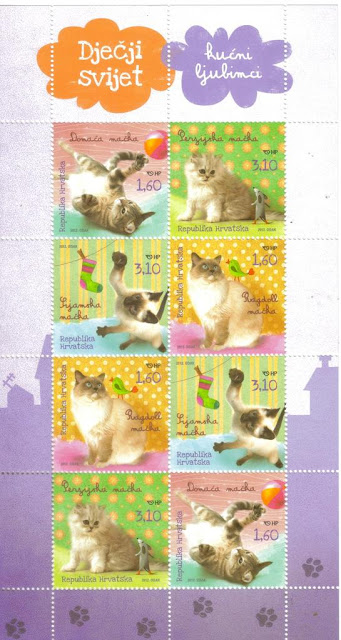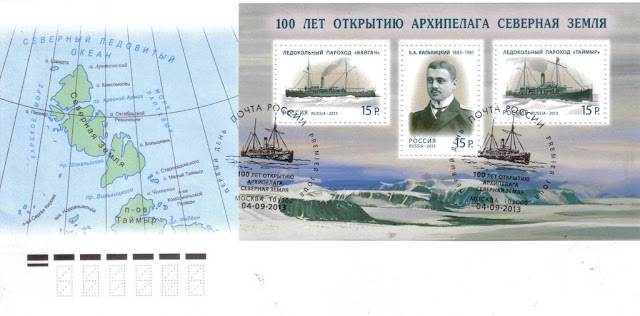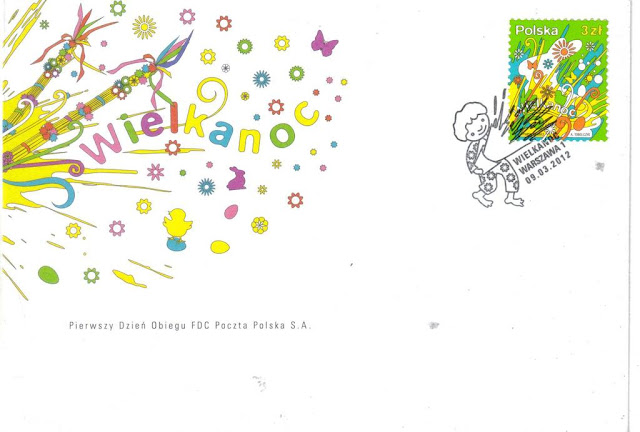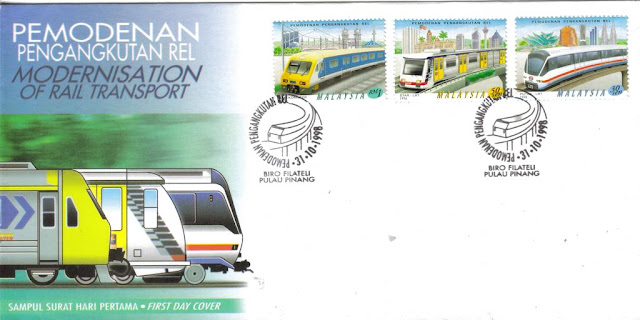You know I adore cats (well, animals in general, but cats have a pretty special place in my heart). Some of you know i used to have two of them, but unfortunately, both of them died within a year and a half, and today it's been one year since the second one broke my heart...so I dedicate this post to my adorable fur-balls that unfortunately are no longer with me.
The Croatian post for several years has been issuing stamps under the title Children's world, with different animals being the subject each year, and in 2012 it was cats, so here I have the FDC and the sheetlet from this issue.
I find this issue super-cute, along with the dogs and the rabbits one (I'm not gonna comment the latest one with the fish though :D)
There are four stamps in this set, each one representing a different type of cat (I must point out that I prefer stray cats to those special breeds' ones, though in the end I do love all of them - however, I'd never pay for a cat or a dog but would always rescue one from the shelter or the street - both of my cats were rescued that way).
Anyways, I better stick to the stamps - as I said, there are four different cats shown, in particular, starting from the left, first comes the domestic cat and from all cat breeds domestic cat is the most wide-spread population in the world. Mostly, they are very resourceful, very quick and limber and extraordinary devoted to their owners and the space they inhabit. (ok, not as devoted as dogs I must say - they would sell their soul to someone else for food :D)
It is presumed that there are between 600 and 700 million domestic cats on our planet and they are also among the most favoured pets. From the historic point of view, domestic cat (Felis silvestris, forma catus) has lived close to people for more than 3500 years, and has developed by domesticating the African wild cat. Domestic cat can have diverse coloured eyes and fur, as well as diverse tail and hair lengths. Its head is most often in harmony with the size of its body which is balanced and muscled, while it varies in size. Through numerous mutations from domestic cats there developed long-haired, no-haired or no-tail cats that further developed into different today known cat breeds. It is well known that many peoples throughout history celebrated cat as sacred animal, especially Egyptians, Chinese and some Muslim peoples. However, if we observe cats through different historic and geographic periods, we can notice that they have not always had the fortune to be celebrated and glorified as special beings connected to Gods. Thus, in Middle Ages cats were massively killed in Europe because they were brought in connection with Satan and considered the incarnation of evil. Still, those times are behind us and the cat has regained its position next to man as a pet and useful domestic animal.
The next stamp shows a Ragdoll cat - it derives its name from the fact that it fully relaxes - like a rag doll - when it is taken in hands. The cat’s gentle temperament and nature also contribute to the name. This species was bred in the 1960-ties in USA, by combining the non-purebred white Persian cat and the holly Birman cat. It was recognised for the first time in 1965 in USA, where it became very favoured. It was imported into Great Britain in 1969 from the breeding house Baker. In 1975 Mr. Dayton founded an international association of fanciers of ragdoll cats, and already in 1985 that cat could be found also in Germany and France. Since then the interest for that peculiar cat breed has been constantly rising so that in 1992 it was also recognised by FIFé. The breed Ragdoll inherited from the Persian cat its strongly built body and calm character as well as an excellent accommodation to living in flats. From the holy Birman it inherited the “pointed” marks on its head, legs and tail.
The third stamp shows the Persian cat - they originate from the province of Khorasan in Persia and the most beautiful feature is its long hair, equally greyish on the whole body with the exception of darker hair on the back and head.
The colour is somewhat lighter on the chest and belly. The hair is shiny, soft and silky and on some places curly while the tail is very long and covered in hair 12 to 15 cm long. Persian cats are exceptionally tame and thus the Portuguese transported them from Persia into India.
It is believed that such cats had been transported from the East to the West by the Vikings, crusaders, tradesmen and seafarers. It is also known that cats were kept also on ships that sailed towards America in order to catch mice and rats; some of those cats were also long-haired. Later, from those cats new and different long-hair breeds.
To have a long-haired cat became the matter of prestige at the majority of courts and among the nobility in whole Europe. Apart from being imported, the long-hair cats also started to be bred and sold.
The fourth and the last stamp shows a Siamese cat - the first records and drawings of the Siamese cat date from about 1350 and serve as proof that it is one of the oldest cat breeds. The cat got its name after the country from which it originates - at that time Siam, i.e. today’s Thailand. The cat was respected in the temples of Buddhist priests as well as at the court of the King of Siam. Nature scientist Palles at the beginning of the 19th century, returning from his journeys from central Asia brought a cat with dark legs, tail and nose, while the rest of its body was covered with white hair. He gave it as a present to king’s family. First bred pair of cats, Piu and Miu was given as a gift to the English consul Sir Owengould by the Siamese king. Also the French got as a gift from the Siamese king a pair of cats while the third donated cat pair was transported to the USA in 1890.
More serious breeding of Siamese cats started in 1920, when they had become very popular. The Siamese cat from that time is pretty different from today’s standard. At that time the Siamese cats were sturdier, had squint, narrow eyes and a gene for kinky tail. Today’s standard implies a slim, long and sinewy cat with a very long and slim tail. The legs of a Siamese cat are in harmony with the body: very long and slim, while the paws are small and oval. The tail is long, slim and spindle and the ears are pointed, big, wide at the base, and positioned so that they continue the line of the wedge. The hair fully clings to the body; it is silky, shiny and very short. When we talk about its colour, especially distinctive are the areas of darker hair: the “mask“ on the face and the “marks“ on its ears, legs and tail. The hair of the body is unvaried and lighter in colour and must be in full contrast to the colour of marks. Today “marks“ of different colours are recognised: black, blue, choco, cream, red, violet, cinnamon etc. The most fascinating on these cats are their eyes - they are not too big, they are almond shaped, slightly slanted toward the nose and intensively blue. Their deep, pure and clear blue colour give this interesting cat yet another trait of extreme interest and secrecy.









































